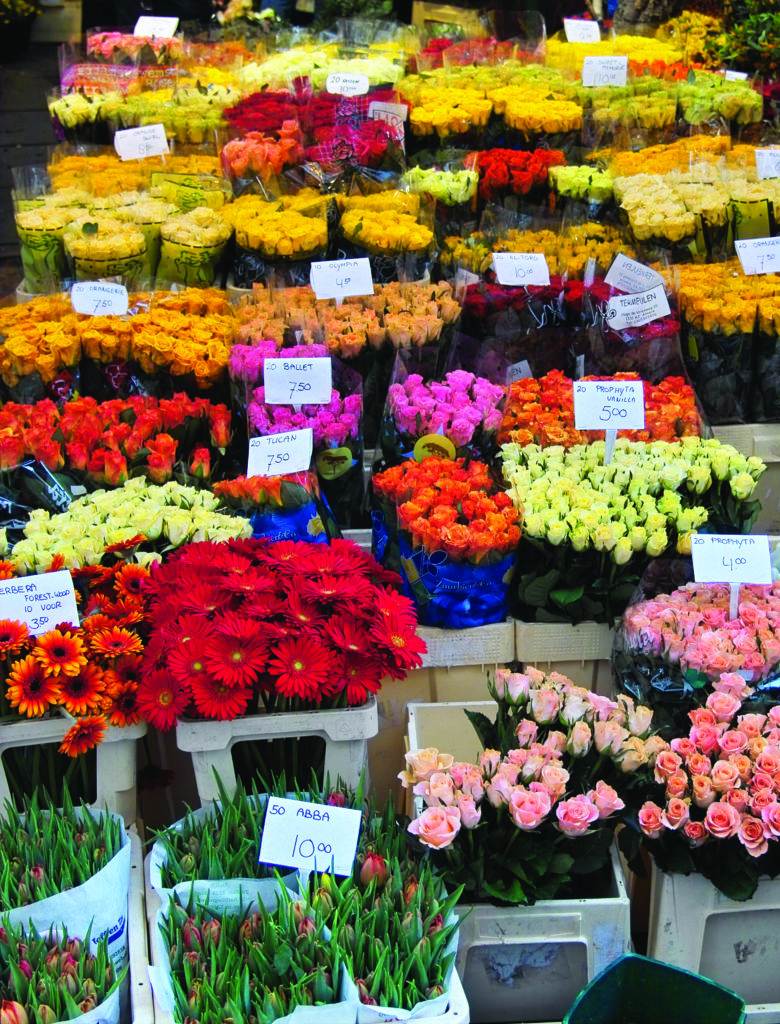BY FRAN SORIN
“Seeing beauty in a flower could awaken humans, however briefly, to the beauty that is an essential part of their own innermost being, their true nature.”
—Eckhart Tolle
Ican’t remember a time when I didn’t love flowers. I have memories as a child of my mother bringing lilacs, irises, and peonies in from the garden, arranging them in vases—playing with flowers for hours like an artist at work—until they pleased her eye.
She then would judiciously place them on the dining room and kitchen tables and buffets where several times a day I passed by and inhaled their intoxicating scents and gazed at their alluring beauty.
Without knowing it at the time, these living works of art opened me up to the world of wabi-sabi—an aesthetic that perceives beauty as impermanent, imperfect, and transient.
Most importantly, flowers made me happy. And not just me. A seminal 10-month study at Rutgers University of behavioral and emotional responses to receiving flowers showed that flowers are a natural and healthful moderator of moods.
Flowers have an immediate impact on happiness. All study participants expressed “true” or “excited” smiles upon receiving flowers, demonstrating extraordinary delight and gratitude. This reaction was universal, occurring in all age groups.
Flowers have a long-term positive effect on moods. Specifically, study participants reported feeling less depressed, anxious, and agitated after receiving flowers, and demonstrated a higher sense of enjoyment and life satisfaction.
Flowers make intimate connections. The presence of flowers led to increased contact with family and friends.
“Common sense tells us that flowers make us happy,” said Dr. Haviland-Jones, the lead researcher. “Now, science shows that not only do flowers make us happier than we know, they have strong positive effects on our emotional well-being.”
Playing with Flowers
I’ve been giving gardening workshops for several years throughout the US.
This exercise, called Playing with Flowers, is probably the most-loved exercise we do.
Here’s what to do:
- Take a trip to the nearest street vendor, farmers market, grocery store, or florist that sells locally sustainable, fair trade, or organic flowers. Whole Foods has a Whole Trade Guarantee for fair and ethical trade. Slow Flowers is a new and expanding site that lists American-grown flower sources.
- If you’re a gardener and you have flowers blooming in your yard, you’re in luck! Pick out as many flowers as you want. Just let your eye go to what it likes and add them to your bunch. This is not the time to scrimp. My philosophy when doing this exercise is that more is better.
- Ideally, you want at least three varieties of flowers, in a range of colors. If you want to add some greenery or flowered branches, feel free to do so.
- When you get home, remove any excess leaves and trim the bottoms of the stalks on the diagonal. It is easiest to use a pruner, which you can find at any gardening center.
- Place the flowers in a sink filled with cool water, with the bottom of the stems submerged.
- Go through your cabinets and take out any kind of vases or containers you have that could hold flowers. Think outside the vase. You can use teakettles, jars, glasses, cachepots, or pitchers. And don’t limit yourself in terms of size—even the smaller tumbler or toothpick holder can look lovely holding the top of one blooming rose.
- Put on some music you love, unplug the phone, and just let yourself play with different arrangements. Experiment with a variety of combinations, and see what you like and dislike.
Notice how colors, shapes, and textures of leaves and flower petals work together. If you start placing flowers in a container and don’t like the way it looks, dismantle and start again. There are no rules here, no boundaries, no goals you need to strive toward.
I know there are countless books and articles about how to create lovely flower arrangements, but that’s not what this is about. You don’t have to be a professional florist here; in fact, striving for any kind of perfection negates the whole point. This is about just letting yourself go and playing, trusting your eye, and noticing all the interesting things you come up with. - You may find that the critical voices in your head are quick to sabotage. This is all the product of the ego, rising up to make sure your spirit stays buried, right where the ego likes it.
- Notice how much you question and censor yourself. Let your kinder inner voice lead you through and nudge you into letting go and just being in the moment. Remember, you don’t have to do this brilliantly. You don’t even need to do it well. You just need to do it for the sake of the childlike soul within.
- When you’re finished playing with flowers, place the containers in various spots in your home where you’ll see them often. Change the water and trim the bottoms of the stems every day to keep them fresh and living longer (and to continue your interaction with them).

This exercise has many benefits, including showing you how to start trusting your instincts, inspiring you to slow down and be in the moment, and opening you up to the profound beauty and power of flowers.
Fran Sorin is a coach and author of the highly acclaimed book Digging Deep: Unearthing Your Creative Roots Through Gardening. She is also a CBS Radio News, Huffington Post, and Psychology Today contributor. FranSorin.com